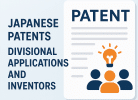Intellectual property right (IPR) protection in Japan has been strengthened in the past decade through proposed pro-patent policies. The intended effect behind these policies is to bolster Japan’s sluggish economy and increase its global competitiveness. Two amendments enforced in the last decade stand out as having significant effects on the Japanese patent litigation system; namely, Articles102, paragraph 1, “Damage Calculation Compensation Calculation Methods,” and 104, paragraph 3, “Restriction on Exercise of Rights of Patentee.” The first policy reform strengthened remedies against infringers, and the second provided defendants accused in an infringement trial the ability to use the invalidity defense in court proceedings. They are two sides of the same litigation coin aiding the plaintiff and the defendant, depending upon one’s position, in protecting their IPR. Here, we will attempt to clarify the two policy reforms and their effects on the Japanese Intellectual Property civil lawsuit system.
The Creation of Article 102-1 of the Patent Act: The method for calculating damages
The new clause in Article 102 was inserted in 1998 to improve the ability of the patentees to demonstrate infringement and prove the amount of damages resulting from it. Under the pre-1998 provision of the Patent Act, patentees were compensated using two calculation methods; 1) by calculating damages using the defendant’s profits from sales of the patented product, or 2) by calculating damages equivalent in value to a “reasonable royalty.” There were several problems with these calculation methods, the biggest of which was the difficulty in determining what the offender’s profits were from the patented product. Under the Japanese Code of Civil Procedure, defendants are not obligated to produce the requested documents if they claimed proprietary information. Without having knowledge of the infringer’s particular accounting practices, it was difficult to establish the profit they received. In addition, if the infringer didn’t make a profit, or if the profit amount was insignificant, the patentee would not be sufficiently compensated under this rule.
If the profit could not be established, the plaintiff’s next recourse would have been to settle for a “reasonable royalty.” But since this amount would be equivalent to what the infringer would have paid if he had duly licensed the patent in the first place, most plaintiffs didn’t feel it was worthwhile pursuing a costly litigation. Despite the rampant infringements in Japan, the number of infringement lawsuits prior to 1998 was fewer than 10% of the lawsuits in the U.S. at the time.
The new clause, Article 102-1, significantly strengthened the plaintiff’s ability to collect damages caused by infringement. The new law stipulated that damages would now be calculated by multiplying the patentee’s profit per unit from the patented product with the number of units sold by the infringer. Compared to determining the infringer’s profits, calculating damages based on their sales volume eased the burden of proof for the plaintiff. This calculation method also increased damages awarded to the patentee significantly. The average amount awarded by Japanese courts to remedy patent infringement rose from around $460 thousand in the early 1990s to $3.2 million in the early 2000s.
It is noteworthy to add that, along with higher damages awarded to the patentee in civil litigation cases, the pendency period for such lawsuits has decreased over the past ten years. This is primarily due to amendments in the provisions of the Code of Civil Procedure. Patentees both domestic and foreign have long complained about the slow relief provided by the Japanese courts in infringement cases. The Japanese government responded to this complaint and took action in 2004 by giving the Tokyo and Osaka District Courts the exclusive jurisdiction over all cases relating to patent rights. The centralized jurisdiction over IP cases has brought about a speedier hearing in IP-related cases. That same year, an Expert Commissioners System was introduced which brought in professors and researchers with advanced knowledge in highly specialized fields to help judges in Tokyo and Osaka Courts understand complex issues and arguments presented by the disputing parties. Then in 2005, an IP High Court was established as a special branch of the Tokyo High Court with exclusive jurisdiction over appeals of IP cases from Tokyo and Osaka District Courts. All in all, measures such as these have significantly reduced the backlog of cases in the IP Courts, shortening what was an average of a 26-month pendency period from filing a complaint to disposition in 1998 to a 12-month period in 2006.
The Invalidity Defense and the Creation of Article 104-3 of the Patent Act
So far, we have seen pro-plaintiff amendments made in the Japanese Code of Civil Procedure. Let us assume that the table has turned and a patentee is suing you for an alleged infringement of his patent. A significant amendment that has been introduced in the Japanese Patent Act in the past decade was the allowance of the invalidity defense to be raised in court proceedings. Prior to 2005, the court had no power to decide on patent validity matters; the JPO had exclusive oversight of all issues relating to the invalidity of a patent. However, in April 2000, in a landmark case of Texas Instruments v. Fujitsu Ltd., the Japanese Supreme court ruled that in an infringement trial, “[i]f a patent contains an obvious reason for invalidity, and it is expected with a high level of probability that the patent would be invalidated by a decision following trial proceeding,]” then the court could refuse to enforce the patent rights, since any enforcement would constitute an “abuse of patent rights”. This decision in the so-called Kilby case led to the 2005 enforcement of Article 104-3 of the Japanese Patent Act which empowered judges to invalidate patents during infringement court proceedings. Since this amendment went into effect, rulings that favored defendants in infringement trials have risen sharply. Pre-2005, there were only about 400 invalidation trials held at the JPO a year with a success rate of 30% to 35%. Figures in 2006 show that after the new rule was introduced, defendants pursuing an invalidation defense has shot to about 80% of district court cases filed, and out of those, approximately 60% has been determined as invalid.
Conclusion
Due to the Japanese government’s pro-patent policies in recent years, the number of successful infringement cases is growing. At the same time, we have also seen a growing number of invalidation defenses raised in court infringement proceedings. The two amendments of Articles 102-1 and 104-3 of the Japanese Patent Act are largely responsible for these trends. Although one is pro-plaintiff and the other pro-defendant policy, they are two sides of the same litigation coin helping to balance opposing interests of patentee versus challenger. While these provisions have created a faster, more reliable patent enforcement system, there is no doubt that they have also made the Japanese patent landscape a more litigious one. It is therefore becoming increasingly important for applicants to comply fully with both the IDS (Information Disclosure System) and the written description requirements for specifications before filing an application in order to stave off potentials litigations in the future.
For more on this and other IP-related topics, please feel free to contact our office.
(Posted on May 1, 2009)






